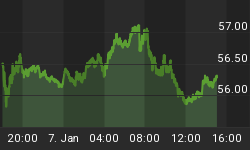'Synergy' is a word typically thought of in 'positive terms', that is - 2 plus 2 equals 5. However, consider that synergy is broadly defined as "two or more things that function together to produce a result not independently obtainable" (Wikipedia), and hence can also be thought of in negative terms, as in - 2 plus 2 equals 3.
Stated in 'negative terms' the result is 'dis-synergy'. Many things can result in dis-synergy, one of the greatest of which in the context of the world economy can be negative contagion, as negative economic occurrences in one country can negatively impact economic occurrences in one or more other countries. Thus the old saying that if 'America sneezes, other countries catch colds'.
This makes China of particular importance, particularly given the current clear signals of Eurozone economic deterioration, where collectively the Eurozone at U.S.$17.6 trillion represented 25% of 2011 reported world GDP (source: Wikipedia).
Consider this in the context of latest 20,000 foot China economic reports and commentaries that suggest:
- year/year Q2 2012 GDP growth is down to 7.6% from 8.1%;
- further continual erosion of new residential housing starts that has persisted, largely unabated, for over 12 months;
- bad loans are increasing in the 'informal' part of China's banking system, often referred to as China's 'shadow banking system';
- current negative changes to China's capital flow impacted in part by current lower China exports than has been the case in the recent years; and,
- current economic conditions in both the Eurozone and the United States result in no reason to believe China's exports will pick up materially in coming months.
Clearly one might:
- question the efficacy of reported China economic statistics;
- also reflect on current reported China GDP growth rates, and think them excellent when compared to both historic and current GDP growth (and in some cases, decline) rates in the developed countries; and,
- also reflect on the difficulty to create perpetual growth at a given rate expressed in percentage terms, as the base from which the percentage is measured continuously grows. This is reflected in the following numbers which assume $1,000 is compounded annually for 25 years and all capital is held and reinvested:
- incremental return on accumulated capital in year 1 - $80;
- incremental return on accumulated capital in year 25 - $507;
- accumulated capital value at end of year 25 - $6,848.
The foregoing ought not to lead one to the conclusion that China's current forecast growth is, viewed in isolation, either poor or terribly disappointing. The real issue is that any reduction in China's percentage GDP growth is 'on the margin', and may have a disproportionate affect on growth - and hence economic recovery and well-being - in the developed economies generally, and perhaps in resource dependent economies such as Australia and Canada in particular.
Topical Reference: China is probably doing worse than the headline GDP growth suggests, from Also Sprach Analyst, July 13, 2012 - reading time 3 minutes; 3 threats to China's second half economic recovery, from Also Sprach Analyst, July 16, 2012 - reading time 3 minutes, and Shadow Banking in China - The Wenzhou experiment, from The Economist, April 7, 2012, reading time 2 minutes.
















